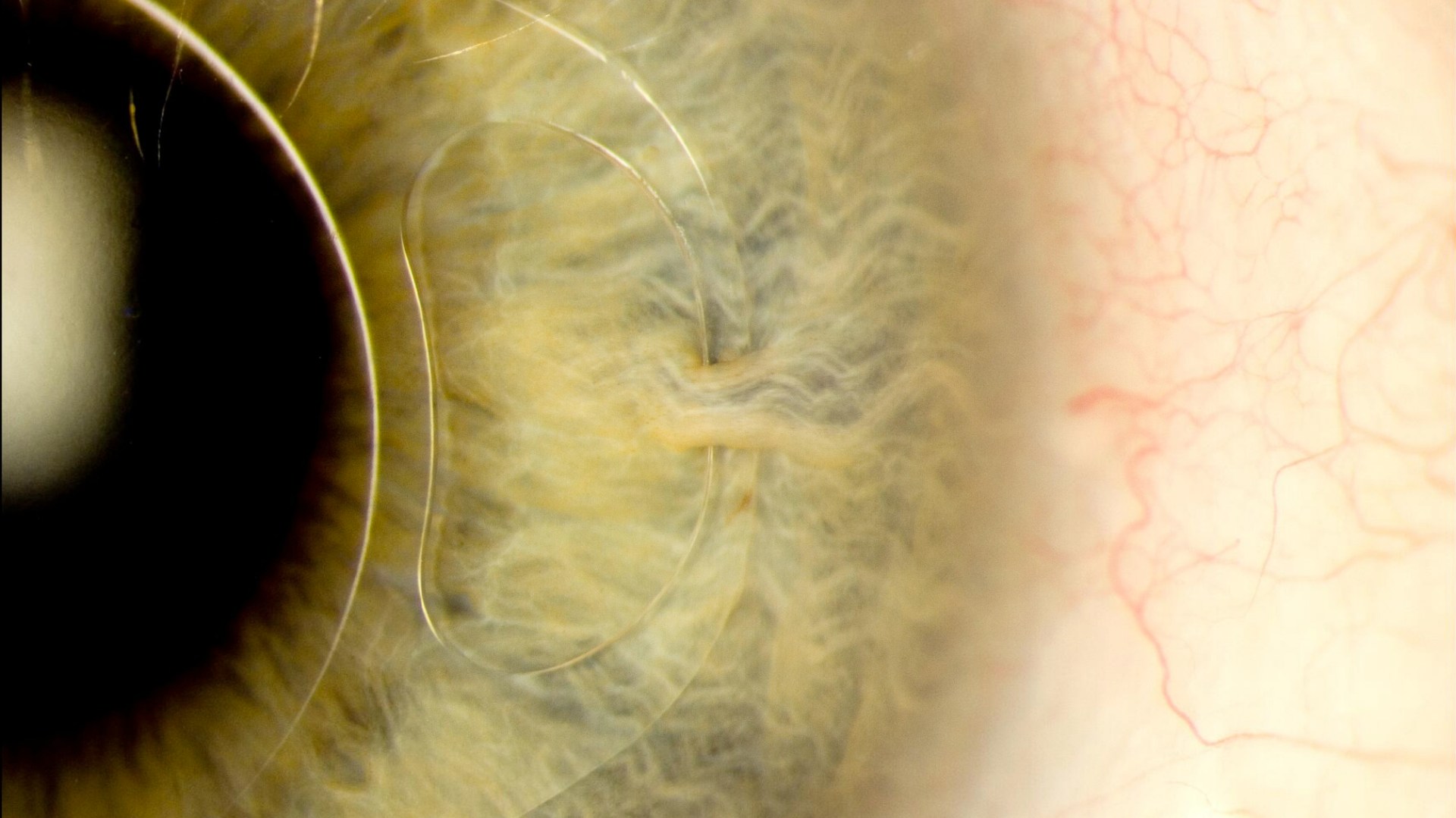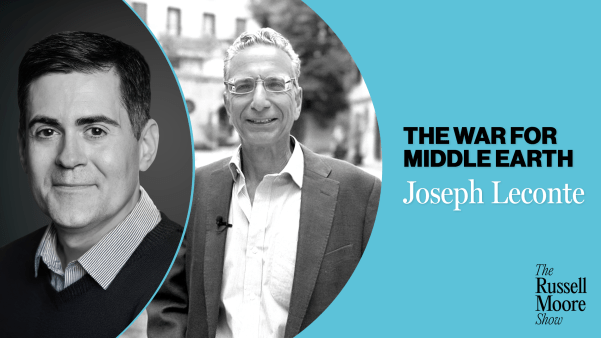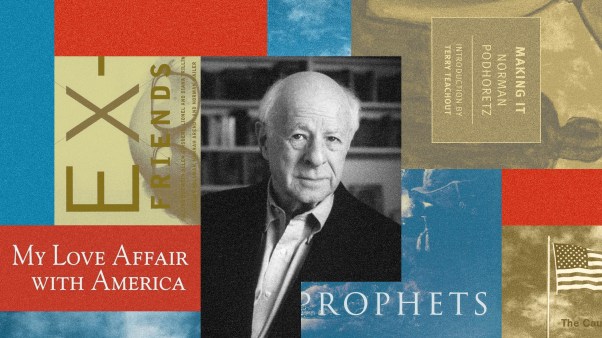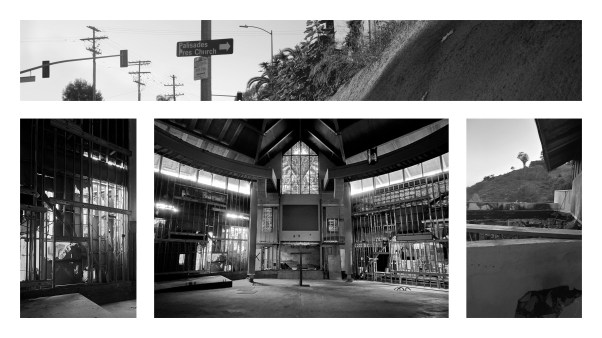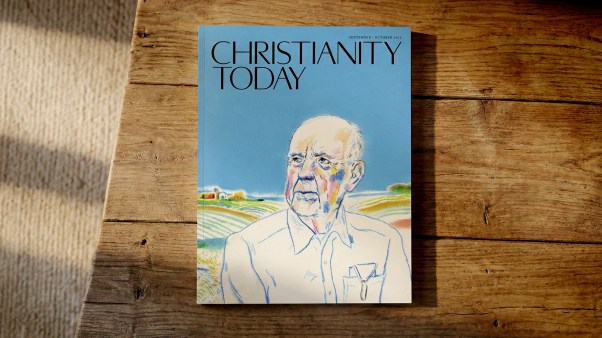This year’s Wellcome Image Awards are truly awe-inspiring, and a reminder for me to look for moments of wonder and worship in my everyday routine. The online winners’ gallery includes a stunning map-like image of a mouse’s retina, a close-up of a human lens implant, and a teardrop-shaped bundle of DNA being pulled into a brand new cell. A non-scientist might not understand exactly what is being shown in these pictures, but with their bold colors, shapes, and textures, anyone can appreciate their beauty.
My field of biology has always been a very visual subject, and today that visual element can be expressed in stunning high-resolution color photographs. Wafer-thin sections of tissue can be stained with specialist dyes, showing where cell division might be going out of control in the first stages of cancer. Living cells are labeled with fluorescent tags, highlighting where a certain type of molecule is needed. Even in whole organisms, these natural fluorescent dyes can be used to track the development of a specific organ.
For some scientists, these experiences of awe and wonder point to something beyond science. The cell biologist Ursula Goodenough has written, “the remarkable beauty of the cell, of everything that is … continues to draw me to spiritual issues.”
Jeff Hardin, chair of the zoology department at the University of Wisconsin in Madison, is a distinguished scholar who is humble enough to let the experience of beauty in the tiny worms he studies direct his attention to the God who is ultimately responsible for them. Hardin sees this beauty as “a pointer to God himself, the author of things that are beautiful and true.” He is fond of quoting C. S. Lewis, calling these moments “patches of Godlight.” While not all Christians have a microscope, we all have these “patches of Godlight.”
I recently stumbled across these words for myself in Letters to Malcolm: Chiefly on Prayer. Setting aside intellectual wrestling and doubts, Lewis describes how he allows himself to be inspired by his surroundings: a rippling brook, cushions of moss, or patches of sunlight in a wood. “They were not the hope of glory,” he writes, but “they were an exposition of the glory itself. … As it impinges on our will or our understanding, we give it different names—goodness or truth or the like. But its flash upon our sense and mood is pleasure.”
Lewis goes on to explain that each of these pleasures is a “channel of adoration,” expressing something very intuitively to God. Gratitude is definitely part of the package, but it is wrapped up so closely with praise that the two feelings are impossible to separate.
For Lewis, that full, God-centered experience of relatively small pleasures, such as rippling streams or warm slippers on a cold day, was practice for a much greater encounter with God. How could we expect ourselves to worship God in more overt ways in much grander settings if we do not practice connecting with him in our more everyday settings?
In this sense, our place of work can be a crucible where a Christian’s worship of God is refined. For Hardin that is the laboratory, and he has not lost his delight at the wonders he sees. Hardin has been involved in campus ministry since he was an undergraduate and even went as far as studying divinity before deciding that his place is actually in the lab. Now he tries to help the students in his classes to appreciate the wonder of the things they are studying.
Hardin is no stranger to aesthetics, having studied music as an undergraduate, and like many biologists, he included a gallery section on his lab website where his team can display their favorite images. Hardin’s research centers on a tiny nematode worm called C. elegans, which shares many of the same processes that shape our own bodies. “Watching these tiny embryos in exquisite detail using powerful microscopes gives us a deep sense of the intricate cellular choreography that builds their bodies,” Hardin said.
When Hardin plays the clarinet or sings in his church on a Sunday, that is an outpouring of everything he has experienced during the week. If he has taken the time to stop and appreciate the things he is working on, reflecting on them and letting wonder become awe and then worship, he can worship more fully on a Sunday.
An astronomy textbook can teach us about the sun, wrote Lewis, but if you want to know what the rays from a yellow dwarf star feel like on your skin, it’s best to step outside on a warm day. In other words, we might know intellectually that God is worth worshiping, but until we actually experience the things he has made, we have not really found him. The scientist is revealing things about the world that show us even more of God’s creative character. Hardin might suspect that some microscopic detail of a cell exists, but until the image of it is there on the monitor in front of him, he cannot know what it is like to experience it—and worship the God who created it.
Life is hectic for a university-based scientist. With teaching, research, supervising students, raising money, managing people, writing, administration, and the new (and very valuable) requirement of explaining your research to the general public, there is very little time to breathe. These moments of stepping back to enjoy the beauty of a fantastically detailed image are like shafts of bright sunlight in a week that would be otherwise entirely crazy or stressful. Like a series of gifts dotted throughout a month, year, or career, these experiences are signposts to a greater reality than pressing deadlines might suggest.
So for Hardin, beauty provides him with a reason to keep coming into the lab every day, as well as staying connected with his faith even though his schedule might sometimes make that difficult. Scientists and non-scientists alike can open a window to let in the fresh air. We can stop, look at the beauties around us, reflect, wonder, and worship. For many of us, that reminder of God may be a new flower in a garden, a snatch of sunrise as we pause in our morning routine, or a well-made coffee. We don't all have the privilege of making groundbreaking discoveries, but like C. S. Lewis, we can allow even quite mundane moments to become a significant reminder of who God is and how much he deserves our praise.
Dr Ruth M. Bancewicz is a Senior Research Associate at The Faraday Institute for Science and Religion in Cambridge, UK. Her PhD is in Genetics, and she has worked at Edinburgh University as well as the UK-based professional group Christians in Science. Ruth blogs at www.scienceandbelief.org.

